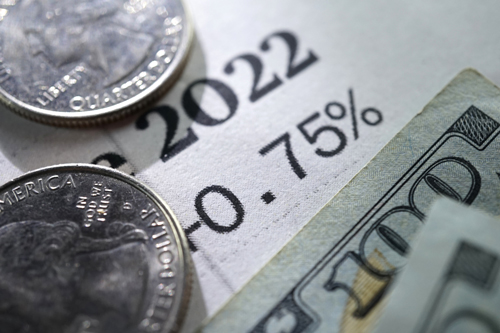
This past week, the Federal Reserve raised the Fed Funds Rate by .75% and issued its quarterly economic projections. In response, home loan rates ticked up to a new 2022 high. Let's discuss three things we learned from the Fed Meeting and what to watch in the weeks ahead.
"You gotta believe in someone, asking me who is right, asking me who to follow...Don't ask me, I don't know". I Don't Know by Ozzy Ozbourne
"In support of these goals, the Committee decided to raise the target range for the federal funds rate to 3 to 3.25 percent and anticipates that ongoing increases in the target range will be appropriate." Fed Statement Sept 21, 2022.
1. The Federal Reserve Is Not Very Good At Forecasting
The .75% rate hike lifts the Fed Funds Rate to a range of 3 to 3.25%, the highest since Jan 2008. This increase will affect short-term loans like credit cards, autos, and home equity lines of credit.
Along with the rate hike, the Fed released its quarterly economic projections. This means every three months they update their projections on economic growth, inflation, and the path for interest rates.
If you follow what they have forecasted for the past couple of years, it's clear the Fed has underestimated inflation, overestimated economic growth, and underestimated how high they want to raise rates.
Back in June, the Fed forecasted economic growth to be 1.7% for 2022. Three months later, they now see the US growing at a slim 0.2% level. Also back in June, the Fed had forecasted Core inflation to be 4.3% for 2022. Now they expect inflation to be higher at 4 to 5%.
Lastly, on the Fed Funds Rate, the Fed expected the rate to increase to 3.4% back in June. Now, the Fed sees the Fed Funds Rate at 4.4%.
The market's reaction – lower stocks and higher rates mimic the uncertainty and volatility we hear from the Fed and economic readings.
2. The Federal Reserve Can't Say Recession
Despite downgrading economic growth at each of the last few quarterly projections and the Atlanta Fed forecasting 3rd quarter GDP to be just 0.3% on the heels of a contraction in the first half of 2022, The Fed has never used the word recession to describe where the economy is or where we are headed. The Fed reiterated that we will all feel economic pain because of their inflation-fighting efforts. He also said the chances for a soft landing are slim. All of this means, the US economy may already be in a recession and headed towards something potentially worse as the Fed also wants to create some unemployment.
Seeing the 2-yr yield rise to 4.11% and well above the 10-yr Note means the bond market is telling us the economy is headed towards a recession, despite our central bankers' inability to utter the word.
3. Higher For Longer
Fed Chair Powell reiterated several times during his press conference that the Fed will raise rates higher and hold them elevated until inflation comes back down to the Fed's target of 2.00%.
The markets are currently pricing in yet another .75% hike in November and a .50% hike in December. This could change if we see a softer inflation reading or surprisingly soft labor market or growth readings.
A reminder - the Fed only controls a short-term overnight rate and long-term rates like the 10-yr Note, which will signal how high and long rates will stay elevated. Seeing a wide yield curve inversion between the 2 and 10-yr Notes suggests the economy will have a difficult time absorbing the hikes without a recession.
Bottom line: The 10-yr Note yield closing above 3.50%, means we should not expect much or any improvement in rates in the near term. We now have to follow the incoming data carefully, which should tell the bond market and The Fed whether economic conditions warrant higher rates.
Looking Ahead
Next week brings the important Core Personal Consumption Expenditure (PCE) Index. How this report goes could impact the pace of rate hikes in the future. There is also some housing data expected to be released.
Comments(0)